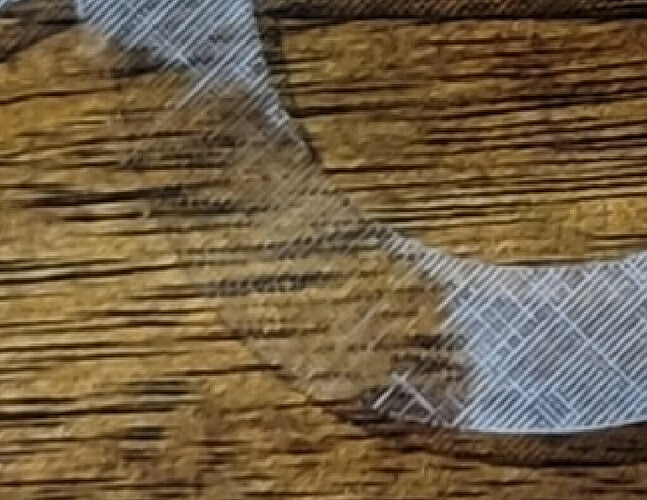This is my first attempt with the Diamond Drag bit. This is an acrylic sheet. I used the standard settings for the 120* McEtcher. As you can tell, most of the project is flawless. However, there are some spots where it seemed as though the drag bit didn’t cut well. My gut tells me that the acrylic sheet probably wasn’t perfectly flat. Would that be the cause? If you zoom in to the picture, you can tell that the bit scratched the surface on the bare spots, just not as prominently as everywhere else. Any thoughts? Should I increase the DOC and let the spring tension do it’s job?
Have not used a drag bit yet. I do a bunch of Poly images with my bits. I have found that my baseboard must be flat. Real flat. Clamping can cause variations in poly as it warps under the clamps.
Reading other posts on the drag bits, I think if you increase the spring tension, you will have some areas deeper and some not as deep. Just shooting from the hip here.
Good Luck
As of right now, the spring tension is stock. The cutters were right out of the package. For work holding, I used double sided tape and went straight to the wasteboard. Maybe the super-glue/painters tape trick would be better as it would have less thickness?
Are you saying that I might should try increase or decrease the spring tension?
Thank you for your input!
Looking at your image, I see areas that are not being covered by the diamond. From reading previous posts, increasing the spring pressure will make it deeper. In that, it will catch those areas also. I would assume that it would cut the area that is lighter, less deep. What I saw might have be that your base board (spoil board) is not flat causing the issues your are seeing.
Appears to be an uneven surface, increasing the spring tension is not going to change the depth and will cut the etched areas deeper. It appears you already cut the piece out so doing another path deeper is not an option.
I just trammed my router, using the glass and dial gauge technique. At one point I needed a closer look at the dial, so leaned over the bed. As I put my hand on the table for balance, I watched the needle spin on the dial. Turns out the bed has some flex to it. By the end of the process I found and corrected my out of square issues, but now I know not to lean on the table when the machine is doing fine work.
There are plenty of posts on here about supporting the bed from below.
My SO5 sits on a torsion box. I’m pretty sure it’s the mdf slats on the cnc bed that are flexing.
The MDF slats should be fully supported by the aluminum Hybrid T-track — are they all fully screwed in securely?
I checked, and they’re all tight. I suspect it’s because the holes for the bolts are exact size, and the mdf is bowing due to humidity changes, rather than expanding horizontally if the hole was a slot. Not a big deal, unless doing fine work. The micrometer makes every movement look huge.
This topic was automatically closed 30 days after the last reply. New replies are no longer allowed.


